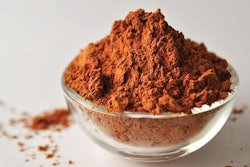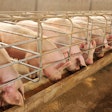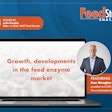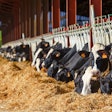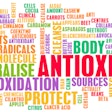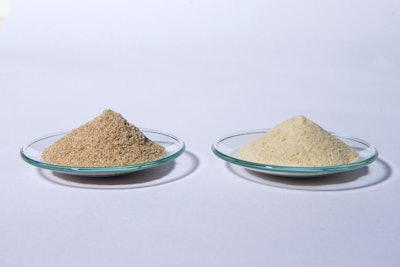
How can players in the industry create a more sustainable business model?
The animal feed additives business started in the 1990s, with a boom in the first decade of the 21st century.
We experienced a transitional period in the second decade of the century where many entities entered the field, whereas others sold out. Products appeared and disappeared, and some continue to do so, although we have now all settled down using a handful of additives that we feel comfortable with.
But not all is rosy for this industry, which is struggling to maintain its lucrative position. The reasons listed here may help some steer their business into a more sustainable model.
ASF challenge and other epidemics
The African swine fever (ASF) virus continues to spread around the planet with China being the worst-hit victim. It is estimated that China alone lost about 50% of its pig population, something that translates to a loss of 25% of total global pig productivity.
Feed additives companies that depended on selling technology-based additives are suffering from a loss of high-margin business. As there is no light in the search for an effective vaccine, nor a prospect of recession of the epidemic, it is to be expected that additives for pigs will suffer in the next few years.
The effort of the feed industry now is how to apply the same products in other species. Alternatively, some companies are investing in additives that can be added in the feed to stop spreading of the disease, but this is still a work in progress.
Coronavirus: fear and trade
The novel coronavirus (COVID-19), which emerged in China, has slowed down trade and human traffic. And, this is not only from and to China, but also within other regions as feed professionals opt for less travel when possible to avoid getting exposed to the disease.
The results continue to be felt, with many cancellations on professional travel; and where humans do not go, business does not follow. In addition, companies that depend on China for their raw materials have seen a backlash from their buyers, including a temporary shortage of materials. Hopefully, this remains a lesson for the future.
Zinc oxide: the EU experience
The pending ban on pharmacological dosing of piglet feeds with zinc from zinc oxide (mainly) and any other source of zinc has created a near-impossible problem for pig producers and an exciting challenge for researchers and nutrition suppliers. Lamentably, the alternatives are few and the majority of them are not thoroughly tested and verified. A multi-faceted approach is advocated, as with the case of antibiotic ban, at least until a novel product emerges that can replace normal zinc oxide and still be within regulation levels.
For now, zinc in piglet diets is allowed up to 150 parts per million, something that does not give much room for alternative zinc-containing products. Nevertheless, this is an active area of research and marketing for the feed additives industry and will remain so for the next five or so years.
Consolidation: the one-stop solution
As it has been predicted, the premix industry is slowly being absorbed either by the animal-producing or the feed additive industry. Now, we see a consolidation of the feed additive industry, as well, in that only a handful of major international firms continue to offer the full complement of additives. Many smaller entities have been absorbed by larger ones in an effort to provide a more complete product portfolio. The idea is to capture more business from each customer offering a one-stop solution, something the old feed mills used to offer to their small local customers. It’s the same idea, but on a different scale.
Marketing fatigue: ‘not another yeast’ syndrome
There is a clear decline in marketing efforts by all segments of the feed industry, first because there are fewer funds to support marketing because of the reasons mentioned above. Also, the focus of marketing is re-evaluated as new media and platforms of content and message delivery are being explored, diluting the message to a larger pool, with uncertain results.
It has already been expressed that buyers are fatigued by over-marketing of the same products again and again, especially in an industry that continues to consolidate itself. Many professionals, who already know the market well, prefer to personally contact their colleagues to get testimonials. The value of testimonials, especially when it comes to additives, remains unexplored, undervalued and unappreciated by the feed industry and its marketing agents.
Lack of innovation and the future of public research
Innovation never ceases as long as we have bright and inquisitive minds. But innovation requires funding that comes with as few strings attached as possible. This is not the case today, when major public research institutions and private research organizations have but in name merged their activities and interests.
The consolidation of the animal industry and the bureaucracy plaguing super-large feed additives businesses are also to be blamed for the slowdown of the innovation pace observed in the past few years. Instead, researchers – public or private – focus on solving problems that often are imposed by legislators, as is the cases of zinc oxide and antibiotics.
Too many sellers and not enough buyers
Buyers of additives suffer from too much attention, to the point they have very little actual time to perform their other duties. There are too many sellers and not enough buyers. This enhances the one-stop solution and complete portfolio attitude promoted by large entities of the feed industry.
The low-cost alternatives coming from Asia have enabled myriad additive companies to be formed, using research already funded by others, and have flooded the market with sales and technical people visiting potential customers. Although there is nothing bad about having many options, there is a point where too many options becomes a problem. That point is reached when products cannot (or will not) be differentiated by the potential user or a trusted public entity that has conflicting interests.
We need to steer direction
The feed additives business lives in its golden years where smart players enjoy their position and consolidate their earnings – similar to a high-profile professional in the last decade before retirement. Others, newcomers, try to make a living based on volume and low cost, but as we saw above, globalization has two sides, and we now experience the negative one.
It will not be long before additives, at least those that survive, become commodities, just like corn, soybeans and salt. Quality will still be an issue, but there will be no exciting times of high margins and virgin markets. Instead, we will start seeing more offers of complete packages, especially in the area of young animal nutrition.

